In much of the country, April is a frenzy of blossoms–cherries and magnolias, crabapples, lilacs, and tulips. The landscape is flooded with new flowers, and they receive all the glory.
Another, more subtle season also unfolds now, however. It is the season of tiny new leaves. Out they come in shades of bronze, silver, mustard, toffee, and lime green: maples and sweetgums, ginkgos, planetrees, birches, beeches, and oaks.
What a shame it would be to miss this special season of fresh greenery on account of the showboats of spring!
Tulip poplar (Liriodendron tulipifera) leaves emerge folded neatly in half. Then they open like a book and expand quickly to full size.
Change happens fast this time of year. In Cincinnati (and in much of the Eastern U.S.), the average high jumps 10 degrees from April 1 to April 30. Here in the Pacific Northwest, the changes are more gradual, but still significant. Here are some brand new oak leaves on April 4 in Portland.
Do you even recognize those same oak leaves a week later?
The baby leaves of sweetgum are perfect miniatures of the final product. The little balls you see are the flowers, which will turn into spiky “gumball” fruits later on.
How distinctive are the compound leaves of goldenraintree (Koelreuteria paniculata)! They are usually infused with a shrimp-pink color unlike anything else in the mid-spring landscape.
Crabapple foliage is often a tragedy by late summer, but now it has not yet been molested by insects or disease. This Malus tschonoskii is unique among crabs in that its foliage is covered with a silver-white indumentum.
Katsura (Cercidophyllum japonicum) leaves come out dime-sized and arranged along the slender stems in orderly pairs. They range in color from brick red to caramel to asparagus-green.
Japanese silverbell (Styrax japonica) leaves also flush out in neat pairs. They stand up primly; the flowers will come later and hang down below.
How cute are these European white birch (Betula pendula) leaves? The structures standing (almost) upright are made up of female flowers. The familiar catkins that sway below are the males.
Beeches (Fagus spp.) unfurl from long, sharply pointed buds. This copper beech cries out for some backlighting to set it off. The dangling fuzzy bits are the flowers.
The iconic fans of ginkgo (Ginkgo biloba) are easily recognizable, even when they are teeny-tiny. Ginkgo is a tough urban tree, and a handful of them even survived the nuclear blast at Hiroshima.
Persian parrotia (Parrotia persica) is a tough tree with a cult-like status among Serious Gardeners. These perfect leaves will remain unblemished all season and then turn patchwork quilt colors in the fall.
Hedge maple (Acer campestre) leaves come out a little crumpled. Like a butterfly just emerged from its chrysalis, they will soon expand and smooth out.
Planetree’s (Platanus ×acerifolia) and the closely related sycamore’s (P. occidentalis) leaves emerge covered in a dense fuzz. They will grow to many times their original size, but aren’t they precious now?
So, show me your kids’ baby pictures if you must, and I will agree that they’re adorable, but secretly I will be thinking, “They’ve got nothing on baby tree leaves!” No, not even kittens or puppies or bunnies or ducklings are cuter.
Well, maybe one thing. I did find this baby box turtle in the garden one year…



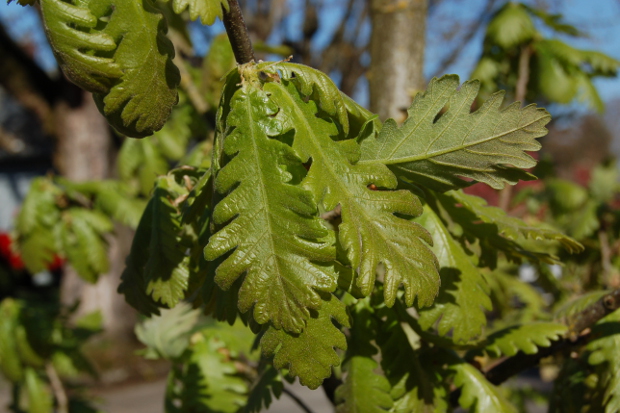
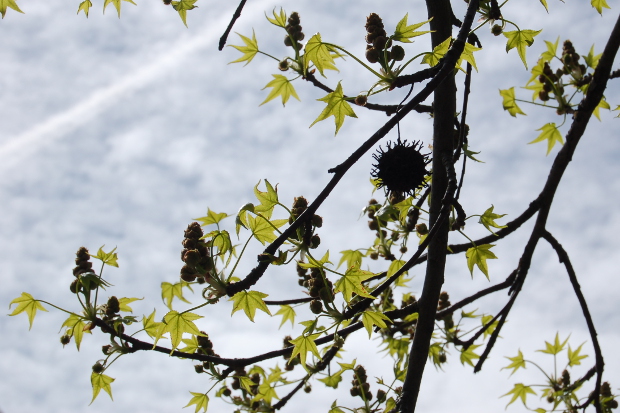
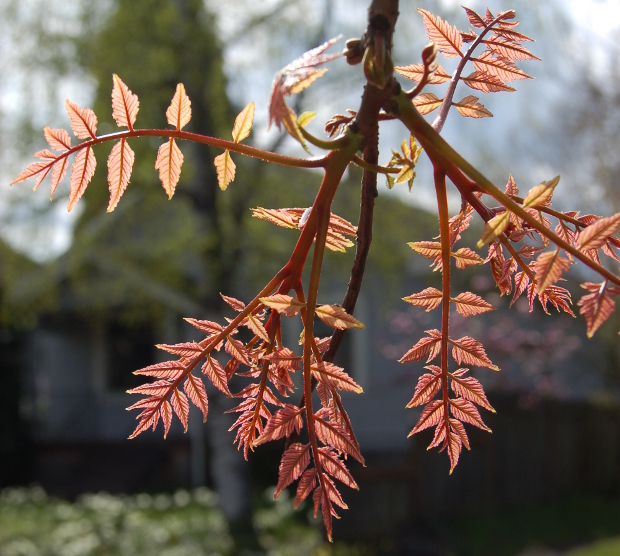
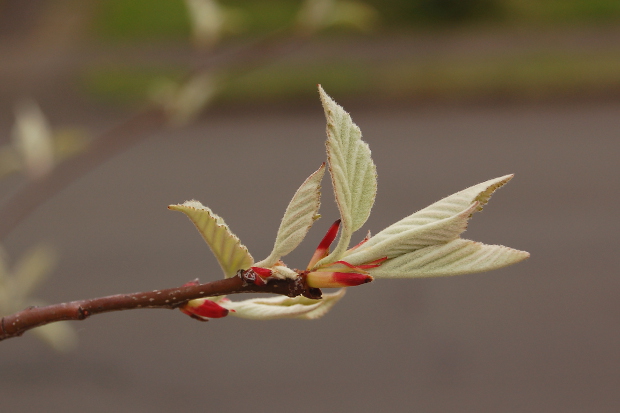
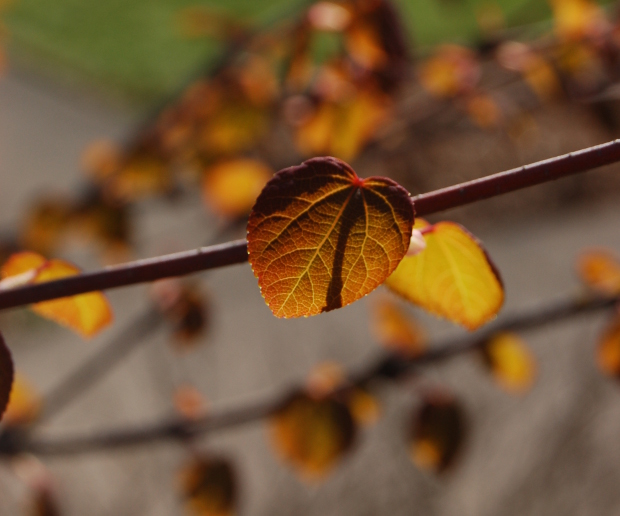
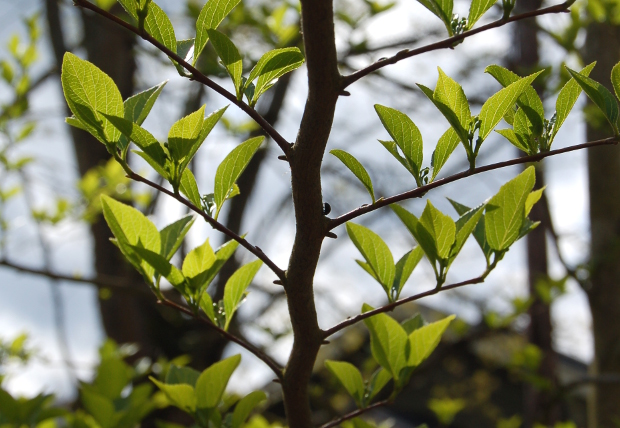



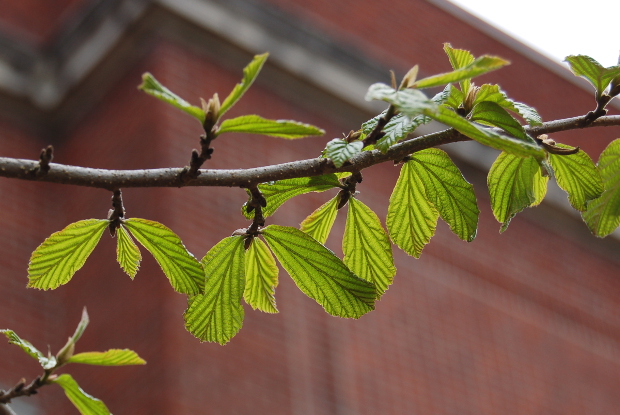
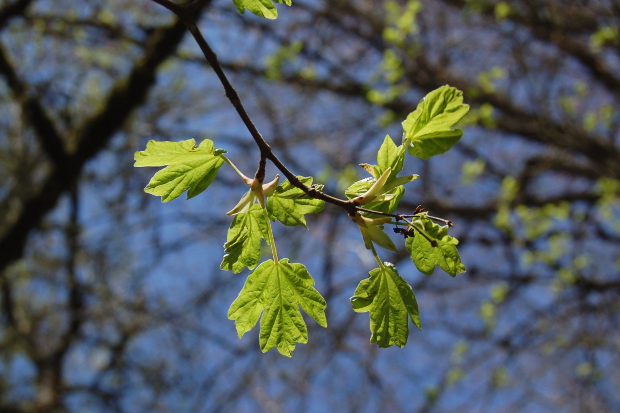
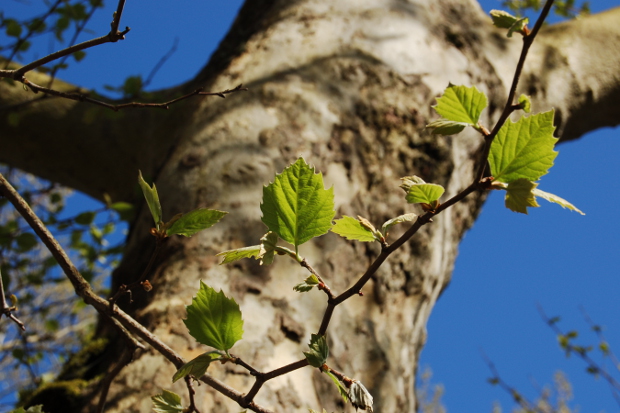

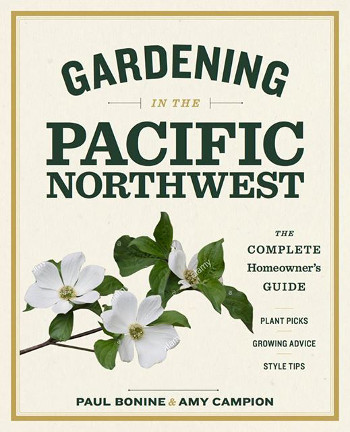























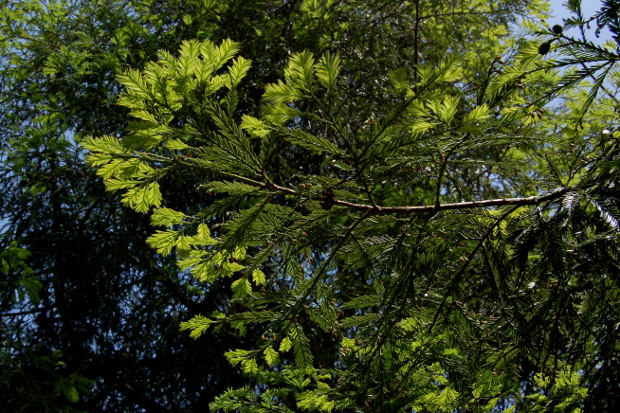


Oh that turtle!!!!
My Oak is a few days behind that first photo, thank you for the preview. Since I bought it last fall after the leaves had mostly turned and fallen I’m eagerly anticipating seeing it in it’s full (baby leaf) glory.
Loree, I do believe that baby turtles have got to be the world’s cutest animal. Finding baby box turtles is rare. I saw lots of adults back east, but only saw 2 babies in 17 years.
A lot more trees have been popping just since I wrote this post! Blackgums, paperbark maples, black locusts… It happens so fast.
Amy, this is my first year growing Spiraea japonica ‘Gold Flame.’ I already had Spiraea japonica ‘Gold Mound,’ so I planted the former near the latter to facilitate making comparisons. One difference I’m seeing already is in precisely the topic of your blog: the new leaves. ‘Gold Flame’ is starting out red, whereas ‘Gold Mound’ starts out more golden.
David, I have a ‘Gold Flame’ in my back yard and it has already passed through the red stage and is now almost all yellow (here in Portland we are a few weeks ahead of you on the East Coast). As you have seen many plants have more foliage color changes than just the obvious ones in fall.
P.S. Plant some Scilla siberica under your Gold Flame for next year! The red and blue together is a nice early spring jolt of color.
I like that suggestion, Amy. Thank you.
Hi, Could I use the photo of a newly emerging crabapple leaf for a school project? I would like to print it on a sign that is being used for a phenology trail in Lake Placid, NY for high school students.
Commenting this old thread to find out if there is a special word or expression for first baby leaves? In Finnish language we call them “mouse ears”. Anything similar in English? Thanks!